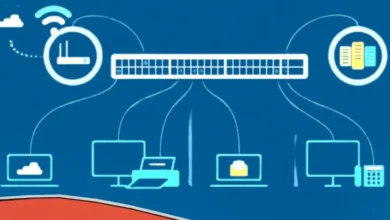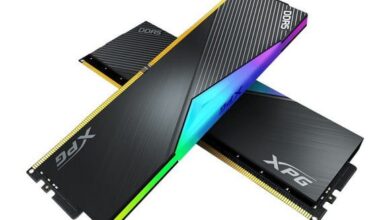Essential Guide to Graco Pump Parts Exploring Components

Professional painters rely on an airless sprayer to paint quickly and efficiently. Spraying produces a smooth, polished finish four times faster than Graco Pump rolling or brushing.
How does it Operate?
Although Graco pump parts have the most cutting-edge functionality and user-friendliness, seven fundamental systems make up an airless sprayer;
Motor and Drive System
These come in electric and gas-powered versions, and they cooperate to supply the pump with power. When spraying flammable materials, Graco MaxPowerTM brushless motors produce the greatest torque over the longest period without producing sparks.
Because it is the most crucial component, the piston pump is sometimes referred to as the airless sprayer’s heart. The piston pump draws the coating from your source bucket, which also applies pressure to the coating.
Pressure Control Dial
This function controls the pressure of the fluid. It is advised to use the lowest fluid pressure at which atomization takes place when spraying. Lower pressure spraying reduces overspray and extends the life of tips and equipment, saving you money on both fibahub!
Manifold Filter
This is made to remove objects that could clog your spray tips, harm your sprayer, or affect the quality of your finish by catching and eliminating debris that may have gotten inside your sprayer.
Fluid Hose
A hose transports a continuous stream of high-pressure fluid to the spray gun.
Spray Gun: The material being sprayed has an on/off valve that is operated by the spray gun. This is the fluid’s final destination before application and is essential to achieving a polished finish.
Spray Tip
The spray tip controls the spray pattern and the amount of fluid released by the gun by utilizing a variety of orifice sizes and shapes. The fluid passes through the spray tip when the trigger is pulled.
These are the seven essential components of every sprayer, though Graco models offer a plethora of additional optional features. These seven parts combine to provide unparalleled performance, speed, and application simplicity for any spraying task in a Graco airless sprayer.
Intro to Airless Paint Spraying
Graco created portable airless spraying in 1958. Thanks to ongoing technological advancements and the development of various airless spray delivery methods on construction sites worldwide, this creative paint-spraying method has become more popular than it was a few years ago. Professional contractors have favored airless paint spraying since the technology was introduced more than a century ago for several reasons:
Spraying without air increases velocity. Because airless spraying is quicker, more jobs can be finished with less labor in less time. It’s also ideal for jobs with a limited weather window.
Finish quality is enhanced overall by airless spraying. Airless sprayers leave a high-quality finish on a variety of surfaces by applying an even coat of paint (called the mil build). Furthermore very versatile is airless spraying. Airless sprayers are lightweight and portable, making them suitable for a variety of coating applications on both exterior and interior surfaces.
There are currently four primary categories of spray delivery techniques.
Spraying Air
Air spray is the initial spray delivery technique. These systems atomize the fluid to be sprayed and apply it to the work surface using highly pressurized air produced by a compressor.
High-Pressure, Low Volume (HVLP)
Another technique for spraying fluid is called High-Volume, Low-Pressure, or HVLP. Similar to conventional air spray systems, these systems also make use of compressed air, but in a different manner.
An HVLP sprayer uses a turbine to atomize and spray the fluid by delivering a large volume of air at a much lower pressure. In actuality, for the unit to be considered HVLP, the air cap must be at 10 PSI or lower.
Because they offer the least amount of overspray and the best precision for a professional finish, these systems are made for smaller fine finish jobs.
Spray Without Air
Airless Spray is the third technique for applying spray. This approach is different from the first two because these sprayers don’t require a turbine or a compressor.
The quickest and most flexible method for painting like a pro and spraying the largest range of unthinned materials is airless spraying. Utilizing an airless sprayer beats using a brush up to ten times and a roller at least four times!
By atomizing, or dispersing, the fluid into tiny droplets without the need for compressed air, airless spraying reaches this speed. Rather, a spray tip is used to pump fluid through high pressure. When the fluid stream encounters air resistance, it breaks up into tiny droplets that make up the spray pattern. The fluid initially emerges from the tip as a fast-moving, solid stream.
You have produced a very basic form of airless spray if you have ever placed your finger over the end of a garden hose that is currently running.
Air-Powered Airless
And finally, the fourth delivery method is Air-Assisted Airless. With the speed and efficiency of an airless sprayer combined with the finish quality of an HVLP sprayer, this system offers the best of both worlds. Compressed air is added to an airless spray fan pattern to accomplish this.
Conclusion
In contrast to conventional airless spraying, the material is supplied to the gun under air assistance, whereupon it is partially atomized through a tiny tip. A tiny amount of air (5 to 35 psi) is applied to the spray fan’s edges to achieve full atomization, which produces a softer pattern, greater control, higher transfer efficiency, and less overspray.
Describe airless spraying, please. It’s the quickest and most flexible way to paint professionally, to put it simply.




